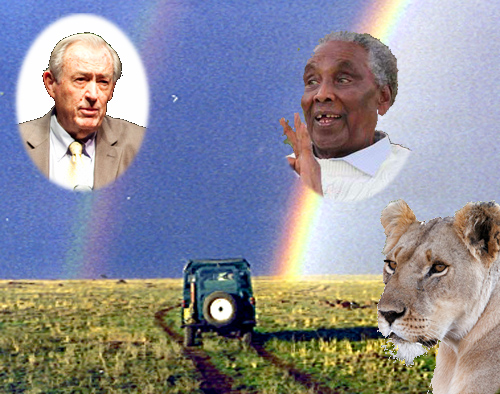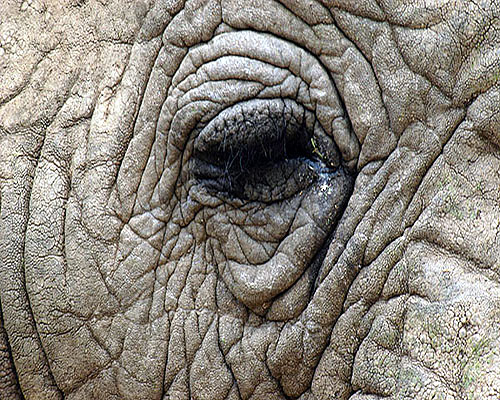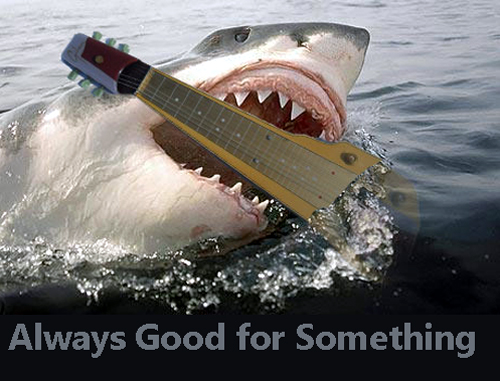
Month: December 2015
Vizuka Mara
 One of Africa’s most iconic prides of lions were poisoned last week in the Maasai Mara, and it’s now time to implement Richard Leakey’s dream to consolidate all Kenyan wilderness under a single federal government agency.
One of Africa’s most iconic prides of lions were poisoned last week in the Maasai Mara, and it’s now time to implement Richard Leakey’s dream to consolidate all Kenyan wilderness under a single federal government agency.
Eight of the magnificent “Marsh Pride” were poisoned by Maasai herders, according to officials who have arrested two men.
Animal poisoning in The Mara is not new, but this killing is receiving unusual attention since this is the pride featured in the BBC documentary, “Big Cats.” The pride has resided for my entire 40 years of guiding outside Governor’s Camp near the Mara River.
Many Maasai believe that protecting the Mara for wildlife/tourism is an unfair usurping of their traditional pastures. This conflict grows at the margin of seasons (which is now) when new rains sprout nutrient grasses.
The problem is not endemic to The Mara or Kenya but exists throughout all the rapidly developing lands of Africa. Ironically, the problem may be exacerbated by Kenya’s faster and broader development compared to many other African countries.
The situation unique to The Mara, though, is extraordinary. It’s a mess: an entanglement of personalities, politics and corruption the likes of which belong in a TV sitcom.
First of all, there really isn’t “A Mara.” Elsewhere in the continent there is “A Serengeti” or “A Sabi Sands” surrounding “A Kruger.”
“The Mara,” instead, is a collection of government and private reserves each separately managed and funded. The map looks like a gerrymandered set of 10 districts in my dysfunctional state of Illinois.

“The Mara” is not a Kenyan national park: the main responsibilities for it rest with the county of Narok in which the wilderness is located. This is an freakish historical legacy of the local Maasai unwilling to share power or land.
Richard Leakey tried to change this decades ago when he was the country’s wildlife czar. He failed miserably, succumbing at the time to a very powerful Maasai politician, Ntimama.
Ntimama is today a very old mzee out of favor with the younger, more progressive regime in Nairobi. But it was only a few months ago that the old man resurrected the land issue of which the Mara is front and center.
The rectangular portion which borders Tanzania to the south is the “government” county reserve, but even that is divided into three administrative sections. The area to the north of the county land is made up of nine private conservancies, more than doubling government land.
It was the development of these northern private areas in the last 25-35 years that contributed so substantially to the increase of animal populations including the great migration.
(A similar situation exists with private reserves like the Sabi Sands which surround South Africa’s Kruger National Park.)
Traditionally all of these lands were used as pastures for cattle and goats by the Maasai. Had none of the lands been protected, the cattle and goats and Maasai would likely have eaten themselves out of house and home by now, identical to what you see today in so many other parts of Africa where overgrazing ends in societal suicidal.
From the point of view of the people living there, though, that’s not such a bad outcome if what comes next are highways and factories. IBM is still in the throes of a fraction-of-a-billion dollar deal to build a high-tech industrial park in what was once Kenya’s Tsavo wilderness.
I doubt you’ll find too many young Maasai today who will lament herding cattle for pennies a day if the alternative is writing computer code and driving to work in a Benz.
Equally sad, private tourism stakeholders are just as mercenary as the Narok Maasai. There have been periods of vicious competition among businessmen, some foreign nationals, vying for the best spots. In this management mayhem developed the private reserve map we see today, with little scientific or management rational and little or no interaction between the competing areas.
That spells disaster. BBC has the exposure to wander between reserve boundaries unimpeded, and thus the “Marsh Pride” became very special. But I’ve known several young field researchers who would have loved to work in the Mara ecosystem, but who turned to Tanzania instead because the politics and restrictions of working trans-reserve were too difficult.
The private reserves do everything themselves: anti-poaching, rules for wildlife management and intervention (several of the Marsh Pride that were recently poisoned were then treated by vets), fees and marketing. But the land has never been actually transferred from Maasai ownership: it’s leased, and that’s the private reserves greatest flaw:
Maasai owners could only be encouraged to compromise their age-old historical life style as pastoralists if they could be paid enough. For a while, they were. The revenues from tourism throughout the 90s were greater than the revenues from cattle farming.
But with political instability followed by terrorism which effected Kenya so seriously from 2007-2012, tourism revenues fell precipitously. Although safari revenues in neighboring Tanzania have planed or shown a slight increase, this has yet to occur in Kenya.
In their heyday the private reserves became extremely sophisticated, bettering the government reserves in anti-poaching and educational efforts. Like all bureaucracies, though, their appetite for capital grew well beyond the simple lease payments to the Maasai owners. Since 2008 virtually all the private Mara reserves have fallen into arrears.
Stefano Chile, the chairman of the second largest private conservancy, the Mara North Conservancy, wrote to supporters recently that “our ability to pay and cover all these costs is seriously challenged.”
He said the conservancy needs $355,000 to become sustainable, again. The first appeal for donations launched at least a month ago has raised only $13,000.
Cheli is one of the most creative and long-time entrepreneurs in the East African tourism industry, perhaps best known for building Tortilis Camp in Amboseli. But in my estimation this is way beyond his or any other excellent tourism manager’s job.
For one thing were a campaign like this successful it would hardly be the last time private reserve officials came to us hat in hand. Which of the nine reserves would you decide to support? I have a hard enough time juggling contributions to two public radio stations serving my area. If appeals came from nine of them, a distinct impression is created that nobody knows what they’re doing.
Collectively that’s the point, they don’t.
Private wildlife reserves have been a very important part of Africa’s conservation efforts for more than a half century.
But nowhere else in Africa is a collection of hodgepodge private reserves so terribly organized and so terribly suspicious and competitive with each another as in the Mara, and trying to treat them as charities is overwhelmingly impossible.
What will work is the Kenyan government getting serious. The photographer Jonathan Scott reported on his blog two days ago that may be happening.
From my point of view there’s only one answer. The government must take over the whole kitandkaboodal. This will really freak out the private reserve stake holders.
But it’s time they listened to themselves: if wildlife conservation is the goal, then look at Amboseli. Look at the Aberdare. Look at the heroic efforts in Nakuru. Look at all the other wonderful national parks in Kenya.
Frankly, it’s time the Maasai of Narok, and the stakeholders of the private reserves were all sidelined, and that the Kenya Wildlife Service takes the whole thing over.
Richard Leakey’s dream was right then, and it’s right now: The Maasai Mara National Park.
African or U.S. Justice?
 In the U.S., a hung jury without justice. In South Africa, justice on high.
In the U.S., a hung jury without justice. In South Africa, justice on high.
Yesterday a Baltimore jury denied or at least delayed justice to the family of Freddie Gray. Last week in South Africa, its supreme court overturned a jury’s refusal to convict Oscar Pistorius of premeditated murder, and convicted him.
Jury verdicts in the U.S. are deemed final. In South Africa and some other countries courts have the power to dismiss a jury verdict and replace it with something else, including a conviction on the original charges.
I think everyone would agree that a jury verdict is not always correct. In both the Pistorius & Gray cases the jury verdict seemed incorrect to me based on the testimony during the trial. I’m hardly alone in these conclusions.
Yet there is much less opportunity for a remedy in the U.S. than in South Africa. A possibility exists now that the Baltimore prosecution will not even retry the defendant. Even if they do, a initial mistrial often suggests the same will happen all over again.
Both cases, by the way, I believe evolved out of excessive gun violence and the excessive availability of guns.
With Congress still preventing any collection of statistics regarding gun violence, it’s harder to determine whether this is true. But presuming an important explanation for police overreaction is that they face such extreme danger, what is that danger?
Guns.
In the South Africa case that was in fact Pistorius’ defense: He did not mean in fact to kill his girlfriend but thought he was shooting an intruder, because there are so many intruders in South Africa with so many guns and so little police protection.
South Africa, by the way, is not sheepish like the U.S. in trying to figure this out. They are compiling study and after study that inexorably links growing gun availability to increased crime.
South Africa and the U.S. share similar gun violence statistics for the same two reasons:
(1) Both countries have massive arms manufacturers. South Africa in particular developed an enormous industry during apartheid particularly after worldwide sanctions were imposed.
(2) Both countries have vigorous laws to protect individual freedoms. The U.S., however, has been so influenced by the wacko NRA that this freedom is now presumed by many (and by some states as in Florida) to mean you have the right to shoot to kill in presumed self-defense!
An American university president recently told his students that they ought to carry concealed guns into the classroom.
Concerned that such irrational frenzy could infect South Africans, its newer constitution created many more impediments to personal gun ownership than exists in the U.S.
Unfortunately these many good laws aren’t enforced because they have so few police. Recent parliaments have conceded much residential protection to massive private security firms rather than deploying an adequate police force.
Guns attract more guns. The weapons’ industry might begin making tanks and missiles, but it’s soon making handguns along with everything else more appropriate for hooligans and rednecks than soldiers.
Good ole Ike’s “military industrial complex” is a hard one to shake.
I’m not convinced that the South African system is better than the American system, but I am convinced that the South Africans are trying hard to do something about gun violence while we are not.
Not Seeing Eye to Eye

Scientists in Africa are criticizing scientists in the U.S. for taking Swaziland elephants out of the country and putting them in U.S. zoos.
And in just the last few days, field scientists in the South Sudan have discovered new elephant families, and the rarer kind to boot!
For the last number of decades it’s unusual that U.S. zoos populate any of their larger stock from wild, foreign lands. Three elephants were imported from a circus-like “elephant ride” operations in Botswana to the Pittsburgh zoo, but the brilliance of the world zoos’ “SSP” (Species Survival Program) powered by an increasing sophistication of DNA technology has allowed world zoos to create healthy and sustainable animal populations simply by exchanging them between one another.
In fact, it’s ironic that as lion populations decline by some studies as quickly as elephants, some zoos around the world are laboring with the notion of euthanizing lion, because there are so many in the captive population.
Captive elephants, though, are quite a different story from lions. Breeding takes longer and is nowhere near as successful in captive populations as with the promiscuous cat. The last several decades has seen a decline in captive elephant population as many zoos retool to become more humane and eFriendly to a public increasingly sensitive to animal rights.
It takes a much larger space, many more staff and much more exceptional husbandry to display elephants than lions.
So as the plight of elephants in the public media grows, the zoo world understandably becomes involved.
More than a year ago the Kingdom of Swaziland – not exactly your model for animal conservation – announced that it was going to cull 18 of its remaining three dozen elephants because, well, they were getting in the way.
Although the Kingdom’s official explanation through a family-run parastatal that’s in charge of its wildlife was more serious, claiming that the elephants were encroaching on habitat that would be better served protecting wild rhino, few believe them.
Nonetheless, the threat to cull is real. So three American zoos stepped in and offered to bring those elephant into the captive American population. Whether a marriage made in heaven or constructed behind-the-scenes, refreshing the captive elephant gene pool with the Swazi individuals would certainly make it healthier and longer lasting.
Problem is that virtually every field scientist in Africa I’ve surveyed is against the importation by the Dallas, Wichita and Omaha zoos.
Within weeks of the announced deal the person often cited as the world’s most experienced elephant field researcher, Cynthia Moss, gathered 80 other very respected field scientists working in Africa to agree on a “Statement of Swaziland” that bitingly disapproves of the transfer.
To get two scientists to agree on anything in Africa is a phenomenal feat. The statement is an extremely powerful indictment of the American zoo proposal.
“Certainly, this proposal will not provide any conservation benefit in the U.S. or Swaziland,” the statement concludes.
It’s now been about a year since the deal was announced. An expected hurdle that advocates of the deal had been working on, the restrictions of the CITES treaty, now grows increasingly problematic as public outcry grows.
NatGeo, Born Free, the Conservation Action Trust, and numerous other nonzoo affiliated conservation organizations are either mildly or solidly against the deal.
My good friend and Cleveland Zoo Director Emeritus, Steve Taylor, says he remains firmly behind the deal, because it has a good chance of giving the current captive elephant population “100 years of sustainability.”
If you believe the wild elephant population will not be sustained for a hundred years, then this makes sense. If you believe the wild elephant population is in imminent peril (which I don’t) it also makes sense.
But I think what is happening is that the hyperbole and rhetoric of the last few years of the demise of the elephant is producing an unfortunate counter reaction.
As often happens to exaggerated claims as evidence mounts against them, the public often goes rocketing off too far in the opposite direction.
Moss collection of field scientists “statement” did not address the very important genetic question of the captive population except with a convoluted reference to a position paper by the IUCN SSC Specialist Group for Africa which argued that importation of wild elephants into the captive population won’t help their sustainability.
But that 2003 statement came from an organization with exclusive interest in wild populations and habitats, before enhanced DNA technology, and well before the current brouhaha about elephant extinction.
While the IUCN may be the gold standard in determining species taxonomy and demographics, it is rarely involved in actual promotion of conservation policies.
Meanwhile back on the ranch, positive news about elephants has just been reported in the South Sudan where the much rarer subspecies of forest elephant has just been discovered by scientists from Bucknell University.
The discovery occurred in a part of Africa that New York Times veteran African war correspondent Jeffrey Gettleman called Africa’s perpetual war zone.
So despite poaching and wars and scientist fights, some good news.
Unfortunately, elephants have been removed from the inspection of science and thrust into the circus of the media. Hardly a year ago they were going out like a flickering candle. Today, the rarest of them pops up in a war zone.
Until the western public’s calibration of the dangers faced by African wildlife finds some measure of truth, we’ll never know who to trust: American zoos, Swazi authorities or African field scientists?
Cheering Your Opponents
 Nigerian forces have fallen into a jihadist trap as they wipe out Boko Haram.
Nigerian forces have fallen into a jihadist trap as they wipe out Boko Haram.
Terrorist strategies are simple: provoke fear and reprisal, and that’s exactly what’s happening worldwide as their power declines.
The change of presidents in Nigeria last year heralded a major offensive against the jihadists that once controlled nearly a third of the country. The army was finally paid and reconstituted by the new Nigerian president Buharu who was previously a decorated Army general.
In Nigeria, like in Syria with Russian forces, jihadists began falling like straws. In Iraq ISIS, too, has been in retreat following increased coalition attacks.
So what’s the problem?
Non-jihadist Muslim Nigerians warned Buharu yesterday “against plunging the country into another Boko Haram-like insurgency.” Read carefully: “another” – ‘ a different.‘
Terrorists are terrorists because they don’t have battleships and long-range bombers. They are guerrillas who master weapons of small but notorious destruction. The success of their killings is not evident across fields of slaughter, but on millions of tiny television screens. Geographical control is no longer as important as mind control.
The Nigerian sweep against Boko Haram has been impressive and fast. Hundreds of hostages have been freed after months, almost all of the country has been liberated from the terrorists’ control.
That’s good. Cheers to the Nigerian Army! But they didn’t stop. Fed by the propaganda of the bits of Boko Haram that remain, their fears were stoked and they charged on.
Nigerian soldiers this weekend swept into Islamic areas that had never been under jihadist control and that had never been associated with insurgents.
They ransacked homes of these Muslim leaders, detained others, laid to waste several Muslim facilities and in the course of this “over-reaction” provoked a number of Muslim (but non-jihadist) leaders to vow revenge.
This is exactly what the terrorists want: they will die happily knowing that others will replace them.
As a real corollary here in the U.S., individuals attacking mosques and presidential candidates claiming they will somehow effect policy against virtually all Muslims… this breeds new terrorism.
Nigeria is the petri dish right now for this theory.
Personally, I fear President Buharu has already gone too far. He’s a ruthless soldier. Not exactly a Donald Trump, he nonetheless swept to power in a wave of nationalist sentiment of “no-holds barred” against the terrorists.
He delivered on his promise, but then he didn’t stop. In a sense it’s not entirely reflective of any over intentions, it’s just that terrorists are the chimera of world conflict. One moment they’re al-Qaeda, and the next, ISIS. Hack one down, and another arises.
Nigeria must stop now and read history: As Russia and the U.S. learned decades ago, you never wipe out terrorists, whether that be in Vietnam or Afghanistan. You simply clean the surface of old terrorists so that new ones can grow.
Terrorists will never be defeated on the battlefield. Terrorists might never be defeated, period. But they can be massively diminished and with time suffocated out of importance.
This requires a certain military restraint by the aggrieved societies of the sort I worry Nigeria cannot develop so long as Buharu is at the helm.
Turning Point
 For years I’ve resisted thinking of South Africa as a banana republic, but what happened yesterday is a slap to my reasonable face and what might be the beginning of an irreversible banana republic mentality.
For years I’ve resisted thinking of South Africa as a banana republic, but what happened yesterday is a slap to my reasonable face and what might be the beginning of an irreversible banana republic mentality.
If you don’t follow South Africa, you wouldn’t understand that President Jacob Zuma’s unannounced firing of Nhlanhla Nene as Finance Minister is what I’m talking about.
Nene had resisted financing some of the most egregious of Zuma’s escapades, including a nuclear power deal that Zuma is personally invested in and lavish plans by an incompetent CEO of South African Airways who Zuma appointed that he himself suggests is his mistress.
The markets’ gaping jaws tell it all. The Rand fell below all anticipated floors. South Africa’s bank stocks, reserve holdings, long term bonds … everything plummeted today.
Last Friday Standard & Poors downgraded South African bonds to a single step above junk status. The worry now is that they’ll go further.
The country’s most widely read online newspaper held no punches:
“[This is] an act of willful sabotage, an act that will have catastrophic effects for everyone…. It is the act of a leader who despises those he leads, a leader who has no respect for his office, a leader who is there to serve a closed network of friends, advisors, backers and loyalists. It is an act that resembles a Hollywood terrorist plot …so close to treason that it becomes difficult to give it another name.”
Only the much more conservative Financial Mail urges calm:
“SA could tolerate 10-20 years of mounting debt or expansive social spending before reaching the cliff.” South African government spending is currently at 45% of GDP. Real banana republics often flirt with 70%.
The heart of the problem, though, is what that debt is being used for:
Zuma’s antics as the leader of Africa’s most powerful economy are legend, and I’ve written often about them. The pitiful nature about them is that he doesn’t even try to deny them, often revels in them:
He’s built himself mansions with public funds, flouted official global functions with various wives and mistresses, publicly laced his family’s coffers with uninhibited nepotistic appointments and most lately, pushed South African Airways to buy many more new aircraft than they need and pushed for the expensive government financing of nuclear power.
But I’ve ended every bad account of Zuma’s corruption with reminders that this is still an early republic, still led by those from the core of revolutionaries who pulled off independence. Unusual latitude in public discretion might be acceptable.
But I don’t know, anymore. Zuma takes the cake.
The South African constitution guarantees the integrity of ministerial offices like many parliamentary democracies. Once appointed, Nene ran the treasury with skill and national pride rebuffing Zuma’s petty schemes.
Many thought he was bringing Zuma round to his senses.
But the power of appointment is also the power to fire, and that’s what happened unexpectedly yesterday.
“For Zuma, it is another accomplishment in his mission to completely capture the state and will ensure unwavering loyalty from those who serve at his pleasure. There will be no defiance in cabinet ever again,” one of the country’s top commentators explains.
“The news broke late at night,” the country’s Mail & Guardian reported. “But instead of [just] shrugging their shoulders, South Africans raged. Something [has] snapped in the nation’s patience.”
Social media is alive with outrage. Close ANC advisories and relatives of those in power are vocal in criticism for the first time.
Public opinion has never tempered Zuma’s foolishness, so I doubt it will now.
We can only hope that the ANC, like America’s Republican Party, takes heed of the maverick destroying it, and unlike America’s Republican Party, does something before it’s too late.
Vitriolic Visa
 Online visa applications are being rushed to operation by countries all over the world, including India and Kenya.
Online visa applications are being rushed to operation by countries all over the world, including India and Kenya.
Most of these new sites are very difficult to use. Many countries like Kenya have inadequate servers to process even the fewest simultaneous requests. While it’s unlikely this new impediment to a vacation will impede tourism growth, it’s a horrible blemish on the country’s image as a holiday destination.
Kenyan officials justified the new process when their site went live last July as providing a better level of security.
Kenya, in particular, has dramatically turned around its level of security in just the last 18 months. That country’s incidence of terrorism is now lower than the U.S.’
I’m also sure of another benefit: less corruption. Immigration officials were notorious at extracting bribes from incoming travelers. This occurred most often when the agent claimed there was no change when a visitor used a large note (like $100) to pay for a less expensive ($50) visa.
So I think without question this benefits the countries instituting the procedures, at least in the short run. They really have to improve their processes, though, or it will begin to take its toll on future tourism:
Of the couple sites I reviewed India’s is the worse, and that seems incredibly ironic given the technological level of the country. But their difficulty was in building a site without adequate foreign culture input.
Like all cultures whose principal script is not letters but images, the transliteration into a language like English tends to get very wordy and organization is often in color rather than structure.
Kenya, on the other hand, has a wonderfully intelligible site. Problem is, it’s ridiculously slow and often crashes. It’s the same problem I presume that Obamacare went through, only the Kenyans have not remedied this problem after six months.
Kenyans deal with this every day, and so to them, it’s no big deal. Everything from their home electricity to the turn signals on their cars will frequently stop working … but it always comes back. Kenyans must understand that isn’t good! It doesn’t take much for a visitor to wonder if the small aircraft taking them to the Mara might lose power as easily!
In all cases the bugaboo to most applicants is the uploading of images of their passport pictures and the front sections of their passports.
The majority of leisure travelers to India and Kenya are retired and have not mastered image manipulation. Many aren’t capable of scanning at all. And for those who can scan, the restrictions to the size, resolution and shape of the images that these sites impose are too difficult for the visitor to manipulate.
It seems to me that as a simple courtesy these countries ought simply accept whatever legible image is presented, and then develop their own technology to manipulate it however they wish.
That hasn’t happened, and so this is the point which stymies most travelers. The remedy requires finding someone or some business that will manipulate the images to the required parameters.
Many travelers have previously used visa application services, and I expect in due course these agencies will learn to process these applications in a way that overcomes a liability issue for them, now:
Currently they aren’t allowed to setup the initial account online or fill in the particulars on the pages that accept what is tantamount to a digital signature from the applicant. Although these steps aren’t the difficult online ones, it reduces the visa agency’s assistance to nothing more than what a local Kinkos or nephew must do to manipulate image structure.
All travelers must applaud efforts to enhance the security of their vacation. We’ve spent years now complaining about TSA but we’ve come to accept it, and to its credit TSA has also improved.
Let’s hope these countries’ online sites also do. For the time being, though, if you’re a typical traveler accustomed to little time getting your visa, better think twice and set aside a week or two!
Africa’s Take on Trump
 Africa, like the U.S., is beginning to take Trump seriously. It’s no longer a fluke. It’s a nightmare.
Africa, like the U.S., is beginning to take Trump seriously. It’s no longer a fluke. It’s a nightmare.
“There is more to Trump than attention-grabbing outrage,” one of Nairobi’s main radio stations broadcast yesterday.
“Trump’s egregious widespread insults and total fabrications [are] on a gargantuan scale,” South Africa’s Mail & Guardian writes today.
The image above comparing Trump to Hitler was tweeted by a 20-year old in Malaysia, and was retweeted thousands of times around South Africa until one of the country’s main news services, IOL-Business, picked it up as a leader on a story about Trump.
There’s a lot of lofty debate whether Trump is like Hitler, following the provocative Washington Post’s opinion piece claiming so.
Frankly, I don’t think Africans care much whether Trump is like Hitler.
There’s always a crazy, even a veritably unhinged political leader. But it’s the texture of the popular support among the locals that defines the era.
I think what Africans like many of us are exploring is the confusion with Trump’s support, seemingly unfathomable, as was Hitler’s in his early days.
A reporter for a Nigerian newspaper was at Trump’s South Carolina rally last night. He wrote:
“Mr Trump supporters cheered and shouted in support… Rod Weader, a 68-year-old real estate agent from North Charleston …said he agreed with Mr Trump’s plans ‘150 per cent’.”
Africans have been preached to for several generations about the importance of democracy to a moral society.
Kenya’s main newspaper, the Daily Nation, summed up the paradigm brilliantly yesterday:
“If a clown like Donald Trump can campaign for the presidency, Rwanda is better off giving Kagame a third term as he has brought about a significant turnaround for his country.”
Paul Kagame is Rwanda’s dictator, nurtured by France and the U.S. because he has imposed peace on the troubled country, albeit as ruthlessly as Stalin. Technically, the constitution rammed down Rwandans’ throats in 1994 by the U.S. and France prohibits Kagame from a further term. Hm. Some conundrum, eh?
That is only one of many conundrums of democracy. People convinced to vote against their self-interest, people manipulated by a Trump to channel legitimate anger in immoral directions, dumbing down issues until they are meaningless … these all emasculate democracy.
Donald Trump brings them into stark relief in the home of modern democracy, America.
Should I say: it gives democracy a bad name?
Or should we own up to the fact that people not voting, and people voting without adequately studying the complex issues of the day, and an electorate about as stupid as you can imagine because those who weren’t stupid withdrew public educational support for two generations are the real culprits?
Democracy is not automatic. It must be earned and nurtured. To my African friends all I can say is take heed:
Donald Trump is in some ways like Adolf Hitler. When power flounders the shark attacks. A poorly stoked and nurtured democracy is the best place anywhere for strongmen to succeed.
Super Jaws Bite the Dust
 Africa’s evolutionary star, the cichlid fish, is once again in the forefront of our growing understanding of natural selection.
Africa’s evolutionary star, the cichlid fish, is once again in the forefront of our growing understanding of natural selection.
In a beautiful twist of evolutionary intuition, a recent study by University of California-Davis scientists shows that selective adaptation might just as easily lead to extinction as species preservation.
Their studies were made in the two African lakes, Malawi and Tanganyika.
The easy way many think of natural selection is that the physical changes in a species caused by random forces (like heat or radiation) prove so advantageous to those changed individuals that they become the genetic kings and soon dominate the species.
Bipedalism in hominins, for example, was so advantageous in the acquisition of food that it became an essential characteristic to all man-like creatures.
But the UC-Davis scientists proved that what at one point may be an advantage can quickly turn into a disadvantage, further supporting the idea that evolution is hardly linear, random and sometimes even counter-productive.
Many contemporary studies of the mechanics of evolution use sub-Saharan Africa’s Great Rift Lake fishes. This is because so many rapid changes are occurring to the environment in the area, and the fish there breed so rapidly, that evolutionary change can actually be measured in real time.
Cichlid fishes are the usual subject. These are the “angel fish” and “neon tetras” and other fresh-water “tropical fish” typically sold in pet stores.
In this particular study, the scientists showed how cichlid fishes came to dominate their ecosystem by developing pharyngeal jaws, a second set of jaws located below the mouth’s first set.
It proved a fabulous adaptation, because it gave them much more power to bite. Previous potential prey, both vegetative and other fish, too hard to consume because of protective outer protection like thick scales or strong fibrous outer layers, became useful food to the fish with pharyngeal jaws.
Soon almost all the cichlid fishes had pharyngeal jaws.
But when Nile Perch appeared in the ecosystem of the cichlids, some of the cichlids began to rapidly decline.
Scientists at first thought that the Nile Perch were consuming the cichlids, even though they were often around the same size with the same mouth size, so there was interest as to why the Nile were winning.
Turns out the Nile Perch weren’t directly responsible. The perch does not have pharyngeal jaws, so it’s able to open its mouth twice as much as the cichlids with the super jaws.
The perch simply out ate those cichlids that were accustomed to eating other fish, because they simply controlled a larger area for food gathering.
Alas, what not so long ago proved a successful adaptation of natural selection subsequently became a reason for species decline:
“Researchers had seen the pharyngeal jaws of cichlids as a classic example of evolutionary innovation. That’s still true, but the study also reveals that the evolution wasn’t wholly beneficial.”
Well, of course, that’s not necessarily right: The unsuccessful adaptation of the cichlid super jaws was, in fact, beneficial to the Nile Perch. So in the context of the overall ecosystem, evolution did evince beneficial progressions.
Super jaws, though, bit the dust.
Rumblings of Revolution

Ergo, global revolution.
If this right, we must view conferences like the one today in Paris as presaging a very violent future. The powers-that-be seem to know what to do, but seem incapable of doing it.
I find the rather humorous now technical term employed by conference negotiators, “mitigation,” particularly revealing. For the COP conferences it’s the “nice way” to justify wealth distribution to the poorer countries incapable of the investments needed to prepare for global warming.
That’s what they say, anyway. What they really mean is mitigation against another Arab Spring, another Syrian civil war, another Ukraine, another series of mass migrations.
The COP20 (the conference before this one) pledged $100 billion annually from developed countries to undeveloped countries as “mitigation” to help them avoid high carbon emitting fuels. This is offensive: hardly a drop in the bucket, almost useless. What’s worse: hardly half of the pledges materialized as one western leader after another faced pushback from their legislatures.
“$100bn is an inadequate political figure. What the international community needs to mobilise … is in the order of trillions,” Seyni Nafo, spokesman for the African Group of Negotiators, told the press at the conference.
“Mitigation” admits that the world’s order is changing as human suffering accelerates: ISIS leaders may be evil souls, but the support from the people over which they reign comes from a desperation to survive.
Desertification is a process that was identified more than 100 years ago showing that the Sahara Desert is growing. But the expansion has been ridiculously fast in just the last few years. In 1925 Lake Chad in Africa was 25,000 sq. km. Today it is only 2,500 sq. km.
The highest temperature ever recorded in October on our planet, 119F, occurred just a few weeks ago in South Africa’s Western Cape.
The link between global warming and terrorism is clear, ridiculously so as the summit occurs in Paris. It’s a simple connection that only crazy deniers try to refute. It’s a simple extrapolation of the tension on societies as their needs grow but planet earth’s bounty diminishes.
As crises pile upon one another, fixes will, too: migration, GMO agriculture, storm shelters, zoning away from coastal cliffs, etc. But only the developed world is capable of mounting these kinds of viable challenges.
Nuclear power, for example, seems like a quick fix if you discount the potential catastrophes it can produce on its own. But the cost of a single new nuclear power plant in France (which enjoys 75% of its power from nuclear) is $15-20 billion dollars. This is about a third of the Kenyan GDP.
The raw fact that the cost of fixes today is so high but exponentially greater for each moment of delay is, unfortunately, a non-starting argument where it matters most with the world’s biggest contributors to global warming: the U.S., China and India. There are still too many deniers in the U.S., too many impoverished waiting for rapid development in China and India.
There are naysayers as well as deniers. Naysayers, though, deserve our attention.
“Even if the world celebrates a Paris climate deal on December 11, the process will still have to be regarded as failure,” writes Prof. Steffen Böhm of the University of Essex.
Böhm is hardly alone in embracing the science of global warming while simultaneously insisting that the global economic system is incapable of confronting it meaningfully.
“Talking will continue until we realize climate change is a failure of a system, which – on the back of fossil fuel – is geared towards exponential economic growth. Nobody who sits at the negotiation table in Paris has the mandate nor inclination to ask fundamental, systemic questions of the logic of the dominant economic system and the way we consume the resources of this planet.”
But for the time being, for the day-to-day moments on which an Indian businessman or Kenyan farmer survive, we can only hope for greater western generosity.
But the end is nigh. No financier can reverse global warming. Nature is demanding greater justice for the deprived of mankind as the only logical way the planet can survive.
We either give it now with all the turbulence of the more privileged finally suffering some, or it will be taken away by the force of nature, and that will be much more painful to all.
Violence Check
 Is it safe to travel to Nairobi? Is it safe to travel to LA?
Is it safe to travel to Nairobi? Is it safe to travel to LA?
To date this year there have been 352 mass shootings in the U.S. which have killed 461 people and wounded 1309. To date this year in Kenya there have been two (that’s “2”) mass shootings which have killed 161 people and wounded another 113.
The murder rate in Kenya (including from “terrorism”) is 6.8 per 10,000 inhabitants. This is less than the murder rate in South Carolina, Michigan, Alabama, Mississippi, Louisiana, the District of Columbia and Puerto Rico and about the same as the murder rate in Delaware, Maryland and Missouri.
Are you considering a vacation to Carolina’s outer banks, to the Mardi Gras, to our nation’s capital or maybe to a concert at Branson? Better watch out.
Why is Kenya’s murder rate lower, and its deaths from terrorism lower than in the U.S.?
Why is the U.S. so violent?
U.S. residents own more guns than residents of anywhere else in the world, 50% higher than the next two highest nations, Yemen and Serbia, and three times as many as major European countries such as France and Germany.
And 17½ times as many guns as in Kenya.
Racism or Stupidity?
 “Terrorists aren’t just… in Syria; sometimes they’re card-carrying defenders of the Second Amendment.”
“Terrorists aren’t just… in Syria; sometimes they’re card-carrying defenders of the Second Amendment.”
The above is not the rant of some leftie like myself. It’s from a respected, very popular national news anchor in Nairobi.
Chastising his American colleagues for not calling the Planned Parenthood shooter, Robert Dear “what he really is, a terrorist,” Madowo in a few paragraphs explained American racism, why we go into endless wars, why black policeman are now being prosecuted, and probably a dozen other American ailments.
Larry Madowo is probably the most watched and liked young African news anchor on the continent north of South Africa. He’s witty and insightful. He writes and speaks English better than most Americans, travels constantly entangling himself in injustices that he recounts with mounds of humor.
But time and again after drilling down into some western wrong (like Dutch MacDonald’s selling their tiny packets of ketchup for 75¢) Madowo sees the root explanation as western racism.
“If [Robert Dear] was a man of colour, the talking heads and think-pieces would not have stopped theorising about his motive and how his background led to all this. But white shooters are almost always ‘mentally disturbed lone rangers’ in need of understanding and support from society.”
“Three people were killed and at least five others wounded” but because the murderer wasn’t Muslim and didn’t behead his victims “American news outlets won’t call him what he really is… because of the colour of his skin.”
It’s worth considering but Madowo has fallen into the trap of many modern media personalities: oversimplification while playing to the ratings.
Racism surely is at the root of many American evils but American media aren’t calling the Planned Parenthood shooter a terrorist not because he isn’t black but because Americans foolishly believe that terrorism is something strictly external.
We have compartmentalized foreign violence as terrorism and domestic violence as anything but, something less threatening and onerous.
Statistics don’t seem to matter: exponentially more Americans are killed annually by American rebels and shooters than foreigners. Extent of destruction doesn’t seem to matter: the effect on Boston’s economy from the marathon shooters is multiple times anything foreign that’s happened in the last few years.
“Home-grown” is a nice adjective for Parisian bombers which is begrudgingly becoming accepted by the American populace as the sobriquet for the killers there, but it just doesn’t apply here.
This isn’t racism. It’s stupidity.
Another Madowo episode also illustrates this.
Madowo recently visited to the U.S. carrying two really favorite gifts for his Kenyan friends here: Ujimix and Royco Cubes.
Customs agents in San Francisco delayed him unconvinced that they were foods.
“A young black male travelling internationally always raises eyebrows. Traveling while black is to accept indignity, racism and delays because of the colour of your skin, even in a post-Obama world. Those of us village boys who grew up dreaming of faraway cities and now have opportunities to visit are resigned to that ugly downside to it all.”
It’s quite possible that the San Francisco customs agent had never been east of Vegas or north of Monterey. Anything that isn’t labeled “Hamburger Helper” is suspect.
Indeed racism is sustained by ignorance, and ignorance is what I’m talking about here. We’ve got a barrel full of problems in the U.S. as a result of a generation of negligence from a government hamstrung by crazies.
But as we begin to disentangle our rotting fibers to start applying fixes, let’s be clear about what to do. In these cases, it starts with education.